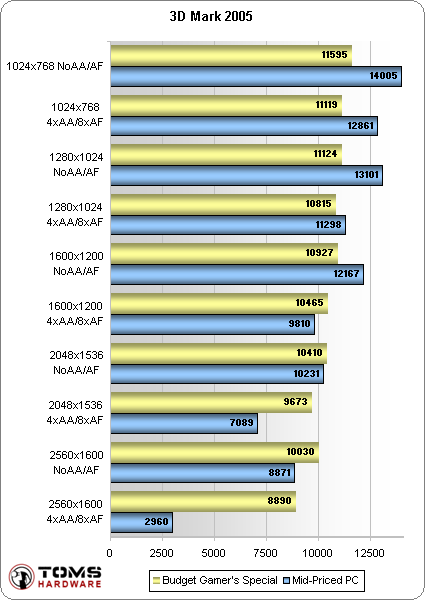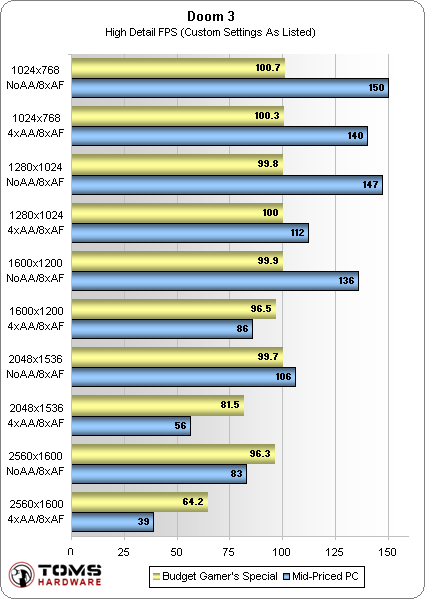System Builder Marathon: Day 4
We Build And Test A Budget Gamer's Special, Continued
Let's get down to the results! Does a low cost PC equipped with an 8800 GTX stand a chance when pitted against a strong, balanced midrange system with an 8800 GTS? Will the low-cost PC's meager 1 GB of RAM and slower CPU prevent it from keeping pace with the midrange system? Let's see:
We were sort of expecting this type of result, but it's really interesting to see the numbers in front of us. At 1600x1200 with 4xAA enabled and higher resolutions, the 3800+/8800 GTX combo beat the e6600/8800 GTS combo.
We're not talking a top-of-the-line pimped out socket AM2 platform here, we're talking a bargain-basement 3800+ CPU that costs $82. That 3800+ CPU is paired with a single GB of RAM, and running in single channel mode, no less.
Sure, the slower 3800+ CPU is bottlenecking the gaming machine... but only at resolutions below 1600x1200. Consider the impact of this carefully: nobody buys a Geforce 8800 GTX to run games at 1280x1024.
Even though the low end system is far from 'balanced', it's hard to ignore that it is a capable gaming machine. Let's see if this trend continues with real-world games and isn't just an anomaly with 3DMark05...
Doom3 tells the exact same story that 3dmark 2005 suggested. Once you hit 1600x1200 with 4xAA, the Budget Gamer's Special will take the lead from the mid-range system. At resolutions below that, the max framerate is capped by the CPU bottleneck, but the cap is so high - about 100 frames per second - that it isn't a meaningful cap at all. Most LCD screens are limited to a 60 Hz refresh rate, and even CRT screens will be about 85 Hz.
Current page: We Build And Test A Budget Gamer's Special, Continued
Prev Page Bonus: We Build And Test A Budget Gamer's Special Next Page We Build And Test A Budget Gamer's Special, ContinuedGet Tom's Hardware's best news and in-depth reviews, straight to your inbox.
Don Woligroski was a former senior hardware editor for Tom's Hardware. He has covered a wide range of PC hardware topics, including CPUs, GPUs, system building, and emerging technologies.

